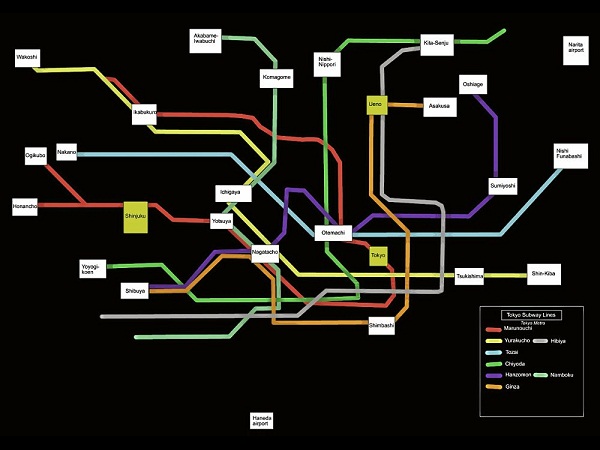Living with design

EVEN subway routes (and their maps!) have to be carefully laid out and designed as an integral part of urban planning and as a fine example of graphic design.
A few weeks ago, I picked up a book from Fully Booked, a little “handbook” sized one titled “Design: A Very Short Introduction.” It was written by John Heskett, a professor of Hong Kong Polytechnic’s School of Design, who has also authored many essays and stories for various design publications. In his book, Heskett looks into the application of design into everyday life, and explores its many definitions and applications
The book is based on his belief that “design matters profoundly to us all in innumerable ways and represents an area of huge, underutilized potential in life.” We sometimes forget that anything existing in this world that is purposeful involved the process of design, and that ultimately, good design enhances the quality of our lives.
As a child, anything I drew, painted or created was, to my definition, “design.” To this day, I notice that many individuals, even designers themselves, miss out on the true essence of design work—that which is to provide utility together with a level of aesthetic quality, which is the more common definition of “design.” What I missed out too is the fact that there exists many other disciplines that deal with “design” purely on a functional or utilitarian sense, and have no relation whatsoever to aesthetics.
Fashioned for practical use
Historically, design goes as far back into the Stone Age when sticks and stones were fashioned for practical use. As civilizations developed and matured, so did these tools—they have evolved into kitchenware, industrial equipment, décor, cars and other useful, and even beautiful, items.
In his books, Heckett expounds on the less obvious aspects of design. Aside from individual, tangible objects, he notes the products of design to include large-scale systems as well. Design encompasses communication (advertising, web design for navigation, directional signage); identities (logos, brand identities); and systems (transportation routes, production and operational structures).
The existence of design in its various classifications is both interwoven, systems made to overlap and interconnect, and layered, one building on the development of the other (which brings to mind the never-ending and ever-growing design patent wars between software and gadget companies). Yes, it does get complicated. Design needs to continuously redefine and mold the environment to enable civilizations and societies to flourish.
Takes a back seat
In most design disciplines, the aspect of aesthetics takes a back seat to that of function because good looks is not necessarily a criteria for success. But aesthetics in functional items does have a purpose: to provide a differentiation of the product and to establish its status in the market.
Take for instance a simple coffee cup with no marked difference in its function, but wherein people will fancy the one that looks better. It can also be priced to be more expensive on the merit of its design. Take as another example Steve Jobs drive for design excellence in all Mac products that have sold millions because of the way they look in addition to the way they operate. Design has positioned their products in the higher-end market.
Fortunately gone are the days when the aesthetic aspect of design was brushed aside as a frivolous exercise. Consumer and hospitality companies have even created executive posts like “Director of Design” or “Director of Style,” giving due recognition to one aspect of their industry that creates a lifestyle or a standard that can help drive their profits up. Then you have people like Heskett finally writing a book on such a significant subject.
The title of Heskett’s book is quite deceiving, for it is a lot more than a mere introduction. In fact, it is an in-depth analysis of the various definitions, processes and cultural aspects of design. In a nutshell, what the book makes us realize is that “the forms or structures of the immediate world we inhabit are overwhelmingly the outcome of human design.” Good design then, should translate to a better environment and a better quality of living. Designers should not take their jobs lightly.
Contact the author through designdimensions@abi.ph or through our Asuncion Berenguer Facebook account.



















